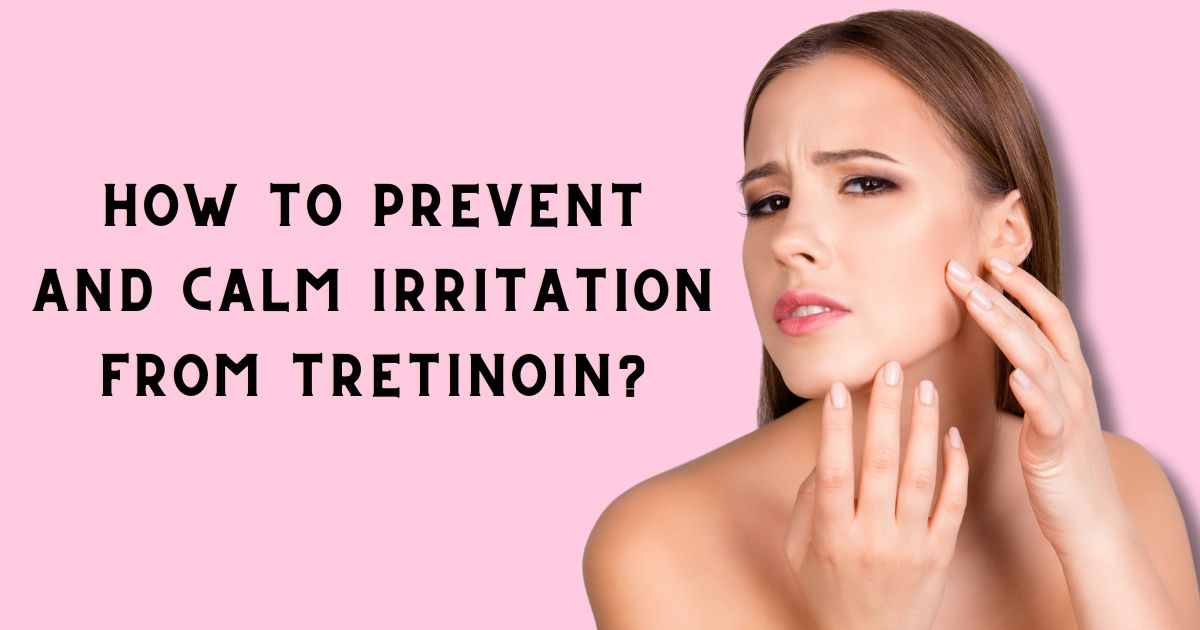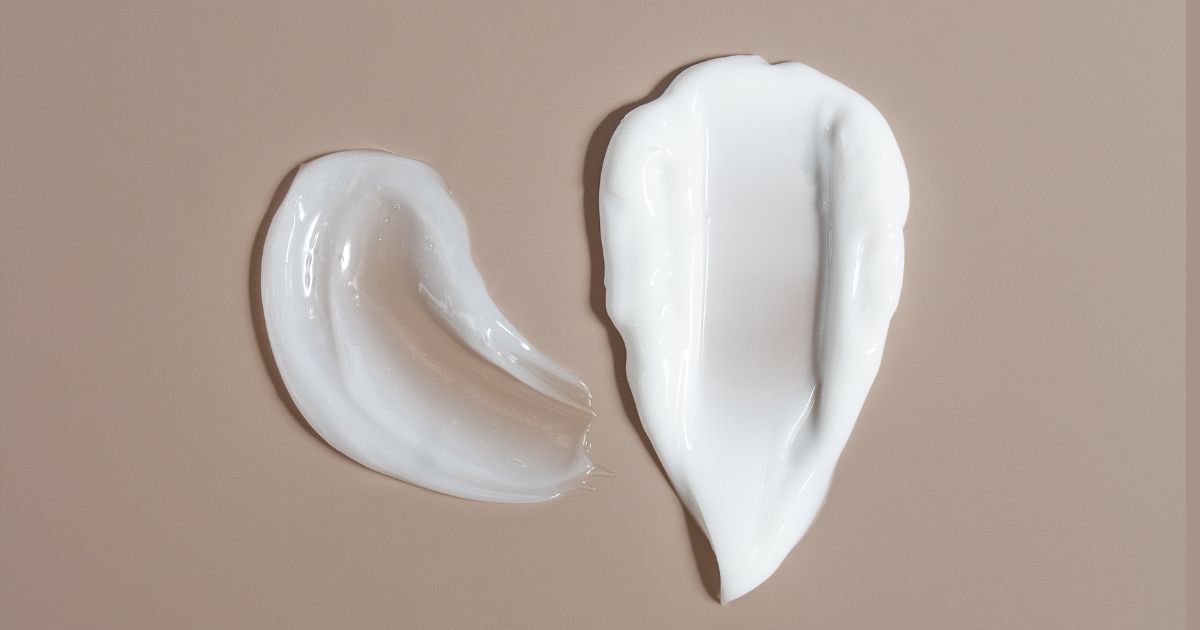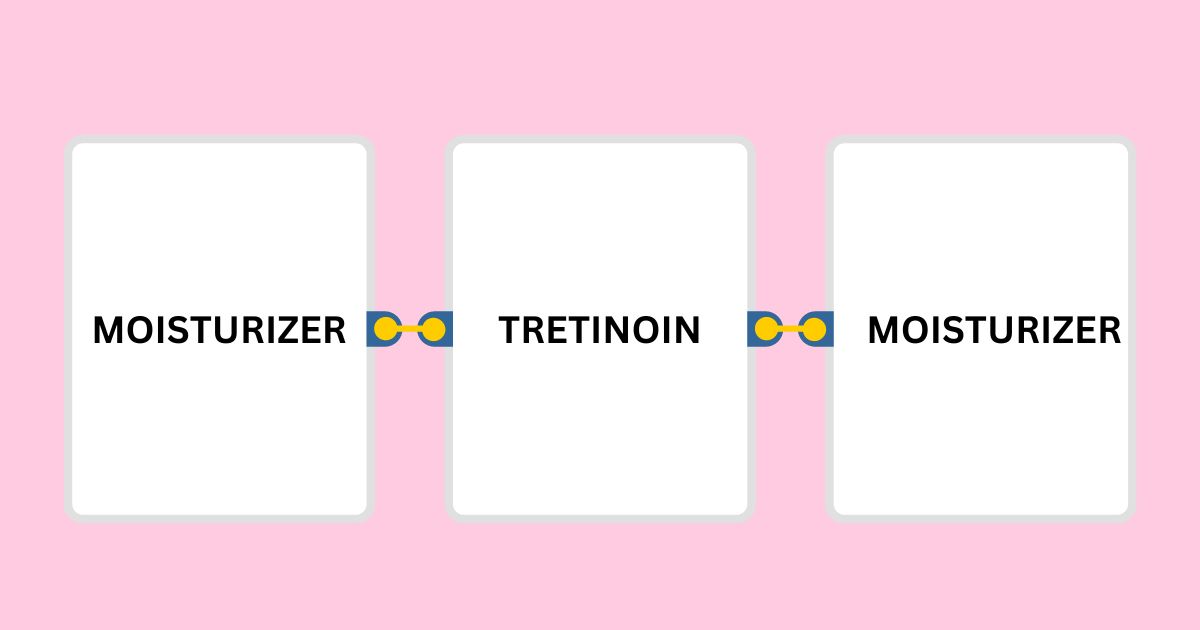
Tretinoin, a derivative of vitamin A, is a powerful topical treatment for various skin concerns like acne, fine lines, and uneven skin tone. While it boosts cell turnover and exfoliates dead skin cells, leading to clearer and smoother skin, it can also cause irritation. However, with proper care and the right skincare routine, you can effectively calm irritation from tretinoin and achieve healthier, more youthful-looking skin over time.
However, despite its numerous benefits, tretinoin can also be quite irritating to the skin, especially when first starting out or when used incorrectly. Common side effects of tretinoin include redness, peeling, dryness, and increased sensitivity to sunlight. These side effects can be particularly bothersome and may discourage some people from continuing with their treatment. Fortunately, with the right approach and skincare routine adjustments, it is possible to prevent and calm irritation from tretinoin, allowing you to enjoy its full benefits without the drawbacks.
Table of Contents
Start Slowly with Low Concentration

When you first start using tretinoin, it’s crucial to introduce it to your skin gradually. Starting with a low concentration allows your skin to acclimate to the ingredient and reduces the risk of irritation. A common starting point for beginners is a pea-sized amount for your entire face, applied 2-3 times a week.
This gentle approach helps to minimize side effects while still allowing you to experience the positive effects of tretinoin over time. As your skin becomes more used to the ingredient, you can gradually increase the frequency of use and consider moving up to a higher concentration for more pronounced results. Always remember to listen to your skin and adjust your routine accordingly to prevent and calm irritation from tretinoin and ensure optimal results.
Follow the Sandwich Method

One effective way to reduce and calm irritation from tretinoin is by using the “sandwich method.” This technique involves applying a moisturizer both before and after your tretinoin application to create a protective barrier on your skin. Here’s how to do it:
- Cleanse your face with a gentle cleanser.
- Apply a lightweight, non-comedogenic moisturizer and wait a few minutes for it to absorb.
- Apply your prescribed amount of tretinoin.
- Wait another few minutes to allow the tretinoin to penetrate the skin.
- Apply another layer of moisturizer to lock in hydration and seal the tretinoin into the skin.
The sandwich method helps to reduce direct contact of tretinoin with your skin, thereby minimizing irritation and allowing for a more comfortable experience.
Hydrate your skin with Glycerin Mist

Hydration is essential when using tretinoin, as the ingredient can dry the skin. A simple yet effective way to keep your skin moisturized is by using a mixture of glycerin and water. Glycerin is a humectant, which means it attracts water to the skin, while water helps to hydrate and plump the skin.
To create this hydrating mixture, simply mix equal parts (50 mL) of rosewater and (50 mL) distilled water and add 2 tbsp of glycerine, and apply it to your face before your moisturizer. This step helps to lock in moisture and keep your skin hydrated, reducing the likelihood of dryness and irritation from tretinoin.
Note: 100% glycerine can irritate your skin.
Use soothing ingredients to calm irritation from tretinoin
Adding soothing ingredients and serums to your skincare routine can also help to calm irritation from tretinoin. Look for products containing ingredients such as:
- Aloe vera: Known for its soothing and anti-inflammatory properties, aloe vera can help to calm redness and irritation, making it a great choice for sensitive skin.
- Centella asiatica (Cica): This botanical extract is known for its healing properties and can help to calm and repair the skin barrier, reducing inflammation and promoting skin recovery.
- Ceramides: These lipid molecules are essential for maintaining a healthy skin barrier. They help to restore and strengthen the skin’s natural barrier, reducing moisture loss and protecting the skin from external irritants.
- Niacinamide: Also known as vitamin B3, niacinamide is a versatile ingredient that offers multiple benefits for the skin. It helps to reduce inflammation, regulate sebum production, and improve skin texture, making it an excellent addition to your skincare routine when using tretinoin.
Using a calming serum with these ingredients before applying tretinoin can help minimize irritation and keep your skin feeling comfortable and balanced.
Avoid these Ingredients while Using Tretinoin
When using tretinoin, it’s important to be cautious about the ingredients you pair it with to avoid potential irritation and adverse reactions. Here are some ingredients to steer clear of:
Harsh Exfoliants
Avoid using harsh physical or chemical exfoliants, such as scrubs with large abrasive particles or products containing alpha-hydroxy acids (AHAs), beta-hydroxy acids (BHAs), or retinol, alongside tretinoin. Tretinoin itself is a potent exfoliant that increases cell turnover, so combining it with other exfoliating agents can lead to over-exfoliation, irritation, and increased sensitivity.
Benzoyl Peroxide
Benzoyl peroxide is an effective ingredient for treating acne but can be too harsh when used with tretinoin. Both ingredients can be drying and irritating, and using them together can exacerbate these side effects. If using both, consider using them at different times of the day or on alternating days to minimize irritation.
Salicylic Acid
Salicylic acid is another popular acne-fighting ingredient that can be too harsh when used alongside tretinoin. This beta-hydroxy acid (BHA) exfoliates the skin and unclogs pores, but when combined with tretinoin, it can lead to excessive dryness, redness, and irritation. Avoid using salicylic acid products while using tretinoin or use them at different times to prevent over-exfoliation and irritation.
Alcohol-Based Products
Alcohol-based products, such as toners or astringents, can be very drying and irritating to the skin, especially when used with tretinoin. Tretinoin itself can be drying, so combining it with alcohol-based products can strip the skin of its natural oils and lead to increased sensitivity and irritation. Opt for alcohol-free alternatives to maintain the skin’s moisture balance and minimize irritation.
Fragrance and Essential Oils
Fragrance and essential oils are common irritants that can cause allergic reactions and sensitivity, especially when used with tretinoin. Tretinoin can already be quite irritating to the skin, so adding potential irritants like fragrance and essential oils can further exacerbate the problem. Choose fragrance-free and hypoallergenic products to reduce the risk of irritation and to keep your skin calm and comfortable.
READ MORE : 5 best facial oils for acne prone skin for extra hydration